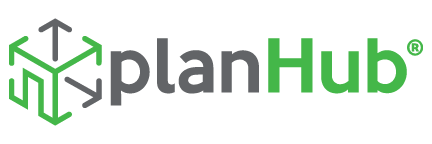Introduction to Programmatic Buying
If you’re in the digital marketing space, you’ve probably heard about programmatic buying. This automated ad-buying process is revolutionizing the way brands and start-ups advertise online, allowing for more efficient and effective campaigns. In this blog post, we’ll uncover the top 7 secrets of programmatic buying, so you can boost your digital marketing game and stay ahead of the competition.
Understand the Different Types of Programmatic Buying
Not all programmatic buying is the same. Understanding the different types can help you choose the right strategy for your brand or start-up. Here are four main types of programmatic buying:
- Real-Time Bidding (RTB): Auction-based buying process where ads are purchased and displayed in real-time.
- Programmatic Direct: Advertisers purchase guaranteed ad inventory from publishers at a fixed price.
- Private Marketplace (PMP): Invite-only auctions where select advertisers bid on premium ad inventory.
- Header Bidding: Allows multiple demand sources to compete for ad space simultaneously, increasing competition and potential revenue.
Pro Tip: Assess your campaign goals and budget to determine which type of programmatic buying is best suited for your needs.

Utilize Data for Precise Targeting
Data is the backbone of programmatic buying. It allows you to target your audience with laser-like precision, ensuring your ads reach the right people at the right time. To make the most of your data, consider:
- First-party data: Collected directly from your audience, such as website interactions, email subscriptions, and CRM data.
- Second-party data: Data shared between partners, offering insights beyond your own audience.
- Third-party data: Data acquired from external sources, providing a broader view of consumer behavior and preferences.
Pro Tip: Combine different data types to create detailed audience segments and tailor your ad creative for maximum relevance and impact.
Optimize Campaigns in Real-Time
One of the biggest advantages of programmatic buying is the ability to optimize campaigns in
real-time. This means you can make adjustments on the fly, ensuring your ads are performing at their best. To optimize your campaigns effectively:
- Monitor key performance indicators (KPIs) like click-through rates (CTR), conversion rates, and cost per acquisition (CPA).
- Adjust bidding strategies and budgets to maximize ROI.
- Test different creative elements, such as ad copy, images, and CTAs, to identify what resonates best with your audience.
Pro Tip: Stay agile and be prepared to make data-driven decisions quickly, as this will help you get the most out of your programmatic buying efforts.

Embrace Machine Learning for Improved Efficiency
Machine learning plays a crucial role in programmatic buying, helping to automate and optimize the ad-buying process. By leveraging machine learning algorithms, you can:
- Predict audience behavior and preferences.
- Optimize ad placements and bids.
- Automate creative testing and personalization.
Pro Tip: Invest in programmatic buying platforms with advanced machine learning capabilities to stay ahead of the curve and improve campaign efficiency.
Ensure Transparency and Brand Safety
In the world of programmatic buying, transparency and brand safety are paramount. To protect your brand and maintain a positive reputation:
- Work with reputable ad exchanges and demand-side platforms (DSPs) that prioritize transparency.
- Set up brand safety measures, like whitelists and blacklists, to control where your ads appear.
- Monitor ad placements regularly and address any concerns promptly.
Pro Tip: Communicate your brand safety expectations to your programmatic buying partners and hold them accountable for maintaining high standards.

Explore Cross-Channel Advertising Opportunities
Programmatic buying isn’t limited to just one channel. Embrace cross-channel advertising to reach your audience wherever they are, including:
- Display ads on websites and apps.
- Video ads on platforms like YouTube and Hulu.
- Native advertising within content feeds.
- Social media ads on platforms like Facebook, Instagram, and Twitter.
Pro Tip: Integrate your programmatic buying efforts across channels for a cohesive and consistent brand message, and to maximize reach and engagement.
Continuously Monitor and Adjust Your Strategy
Programmatic buying is a constantly evolving landscape, and staying on top of trends and best practices is crucial. To keep your strategy fresh and effective:
- Regularly review your campaign performance and make data-driven adjustments.
- Stay informed about industry developments, new ad formats, and emerging platforms.
- Test new strategies and techniques to discover what works best or your brand or start-up.
Pro Tip: Embrace a culture of continuous learning and improvement, and don’t be afraid to iterate and make changes to your programmatic buying strategy based on performance data and industry trends.
Conclusion: Harnessing the Power of Programmatic Buying
Programmatic buying offers an incredible opportunity for brands and start-ups to optimize their digital marketing efforts and reach their target audience more effectively. By understanding the different types of programmatic buying, utilizing data for precise targeting, optimizing campaigns in real-time, embracing machine learning, ensuring transparency and brand safety, exploring cross-channel advertising opportunities, and continuously monitoring and adjusting your strategy, you can harness the power of programmatic buying to boost your digital marketing game.
Ready to take your digital marketing to the next level? Request a consultation to improve your digital marketing efforts. Stay updated on the latest digital trends by subscribing to our newsletter.
Don’t forget to visit d-dat.com for more useful and free content!







